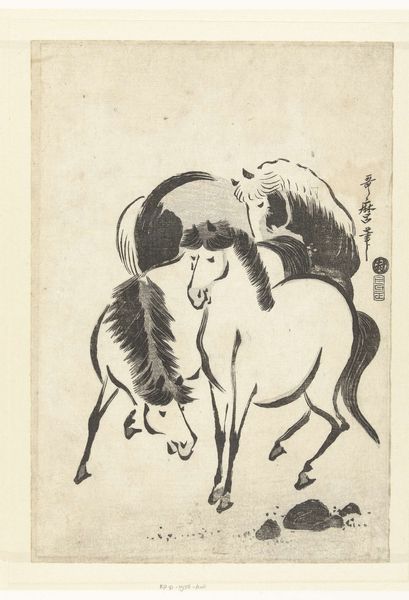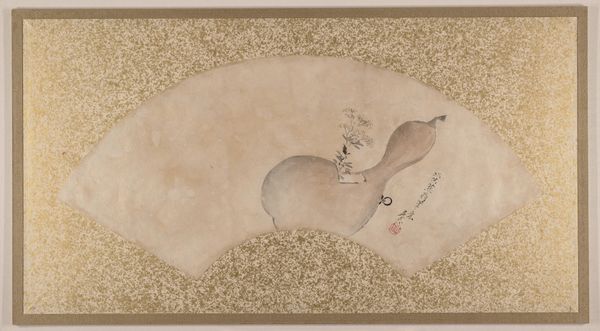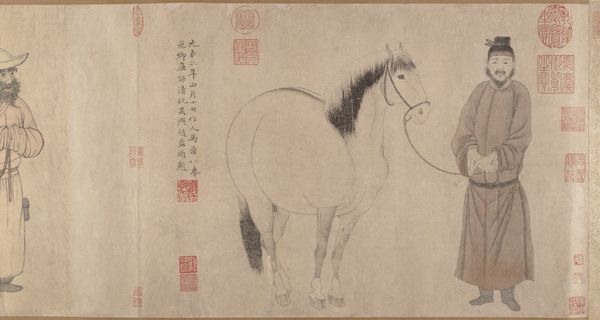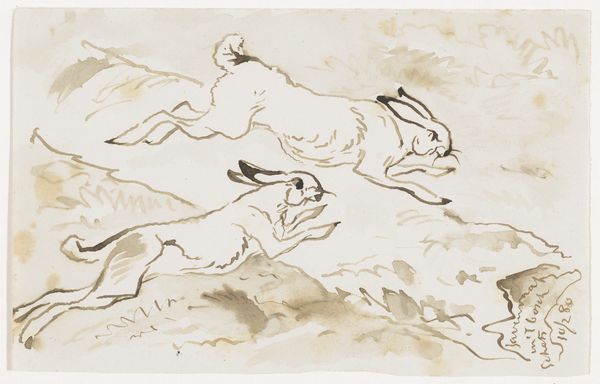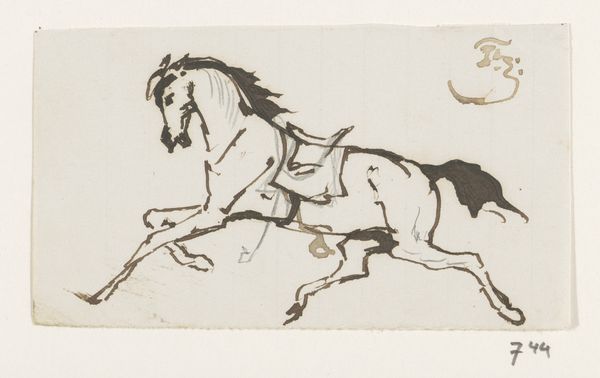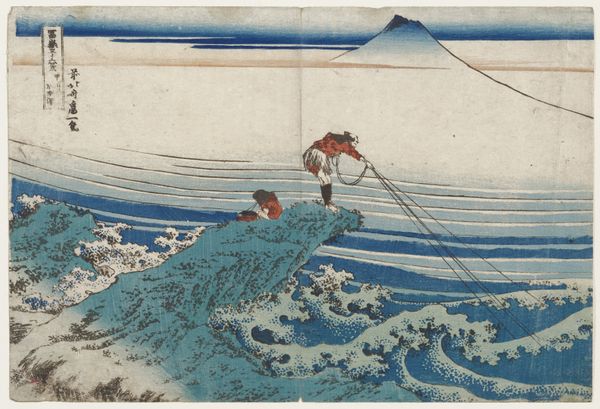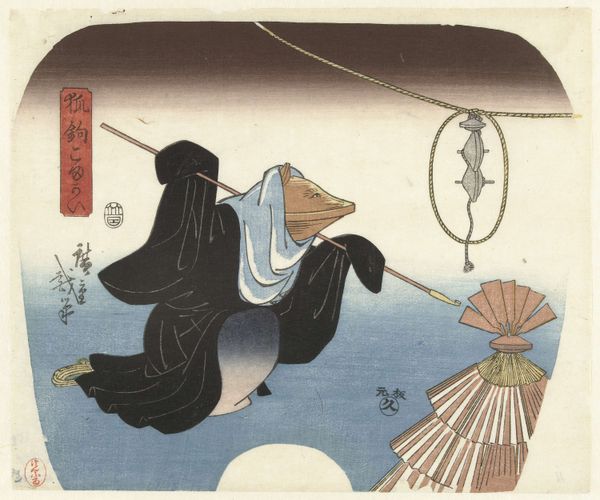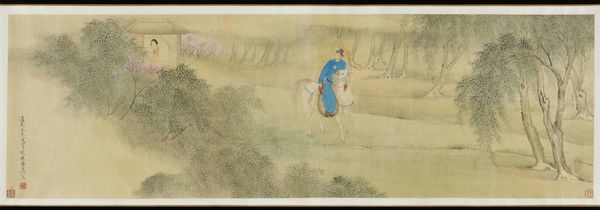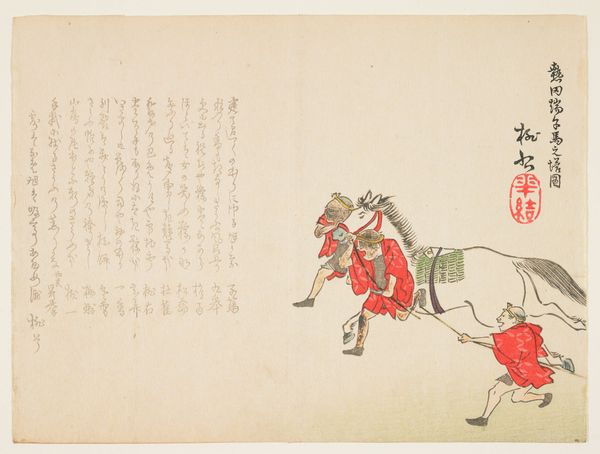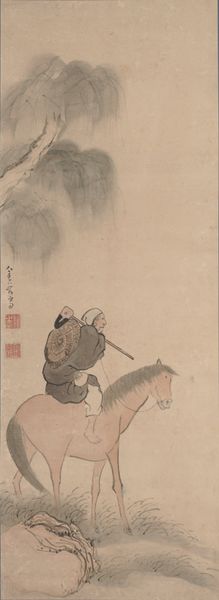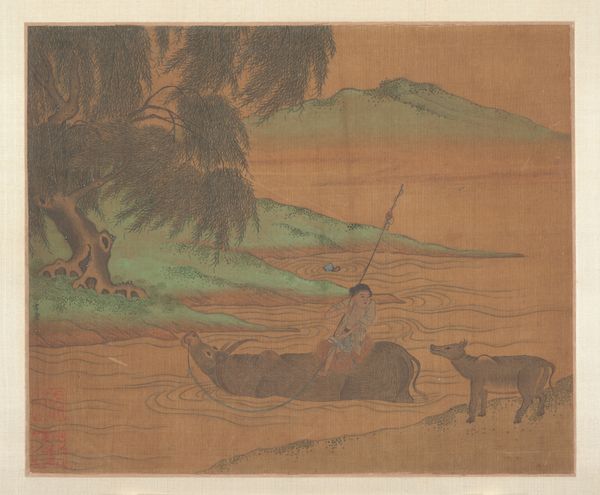
drawing, paper, ink
#
drawing
#
asian-art
#
landscape
#
figuration
#
paper
#
ink
Copyright: Public Domain
Curator: Here we have Gao Qipei’s *Finger Painting*, created in 1684. It’s an ink drawing on paper, currently held at the Minneapolis Institute of Art. Editor: Well, my first impression is the sheer dynamism of it. The horse appears to be caught in mid-stride, perhaps crossing a stream. Curator: Indeed. Qipei employed his finger and fingernails rather than a brush. This informs not only the texture, which gives a fluid movement to the landscape. It also brings an unconventional treatment to figuration. Editor: Thinking about the choice to use fingers… there is a fascinating tension between this very intimate method and the conventional subjects one might expect from Chinese landscape painting of the era. It brings this lofty tradition back down to earth somehow. Curator: Precisely! Finger painting as a medium, particularly by an artist of Qipei's stature, challenges the conventional hierarchy separating "high" art from craft. Editor: So it becomes a social commentary in its way, because of his choice in methods? The materiality of ink and the paper is made immediate through this unexpected tactile engagement. You can imagine his direct, physical involvement in creating this scene. Curator: And this subverts expectations, no? Consider the structural tension Qipei creates with the sweeping diagonals countered by the solid, albeit somewhat whimsical, rendering of the horse itself. This push and pull lends the drawing much of its energy. The work questions not only the expected modes of production. The figure stands as a compositional fulcrum against the graded wash of the ground. Editor: I like that idea of balance against method. One final thing—the fact it's named *Finger Painting*, there’s a sense that the medium *is* the message here. Curator: Perhaps it invites us to consider that the essence of the artwork resides as much in the process of creation as it does in the final image presented before us. Editor: Well, it seems in bringing traditional artistry down to an unexpected material engagement, the piece achieves even more conceptual depth.
Comments
No comments
Be the first to comment and join the conversation on the ultimate creative platform.
